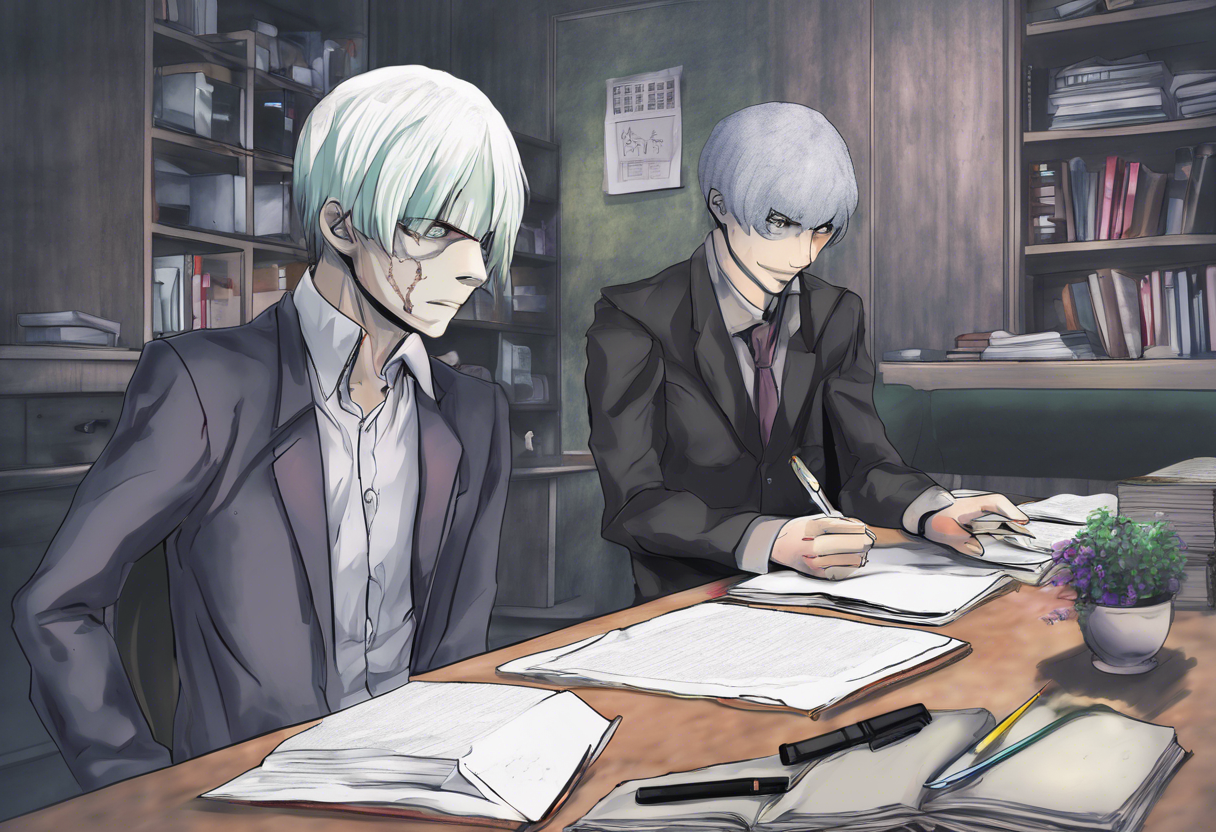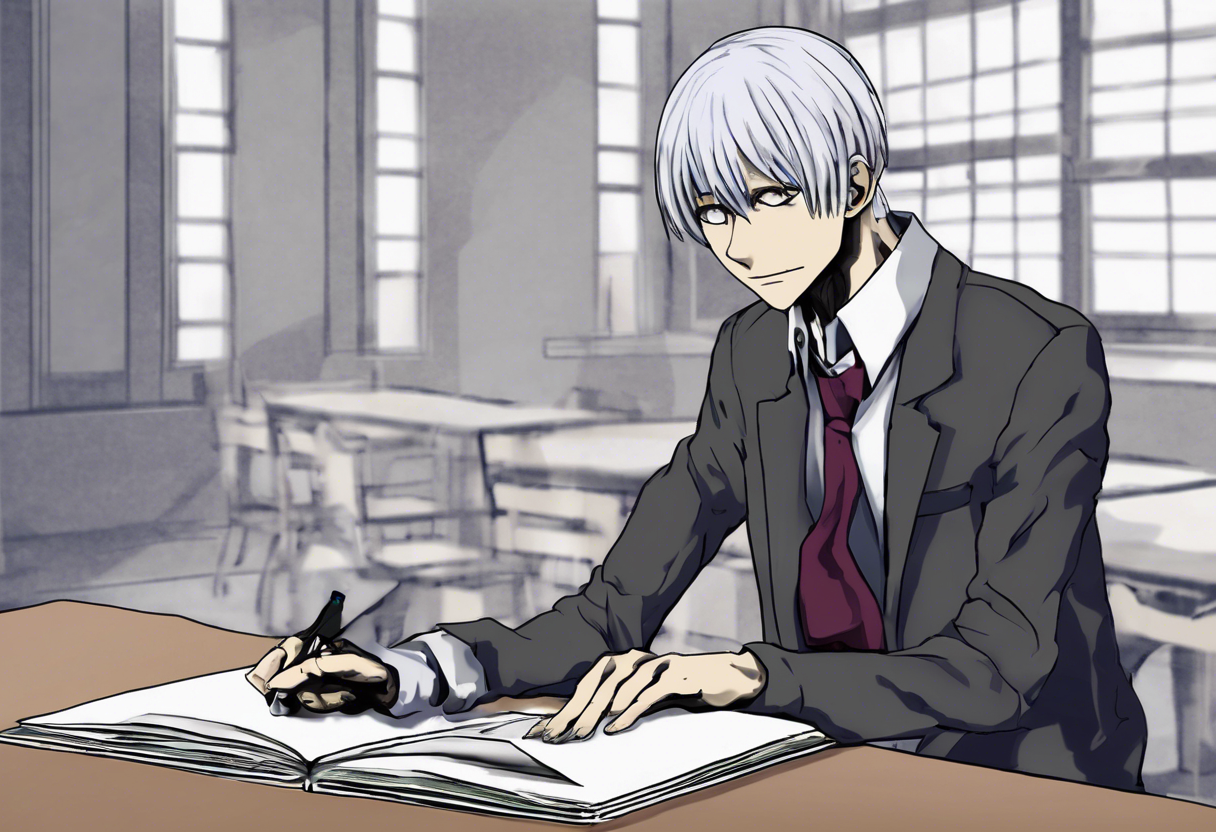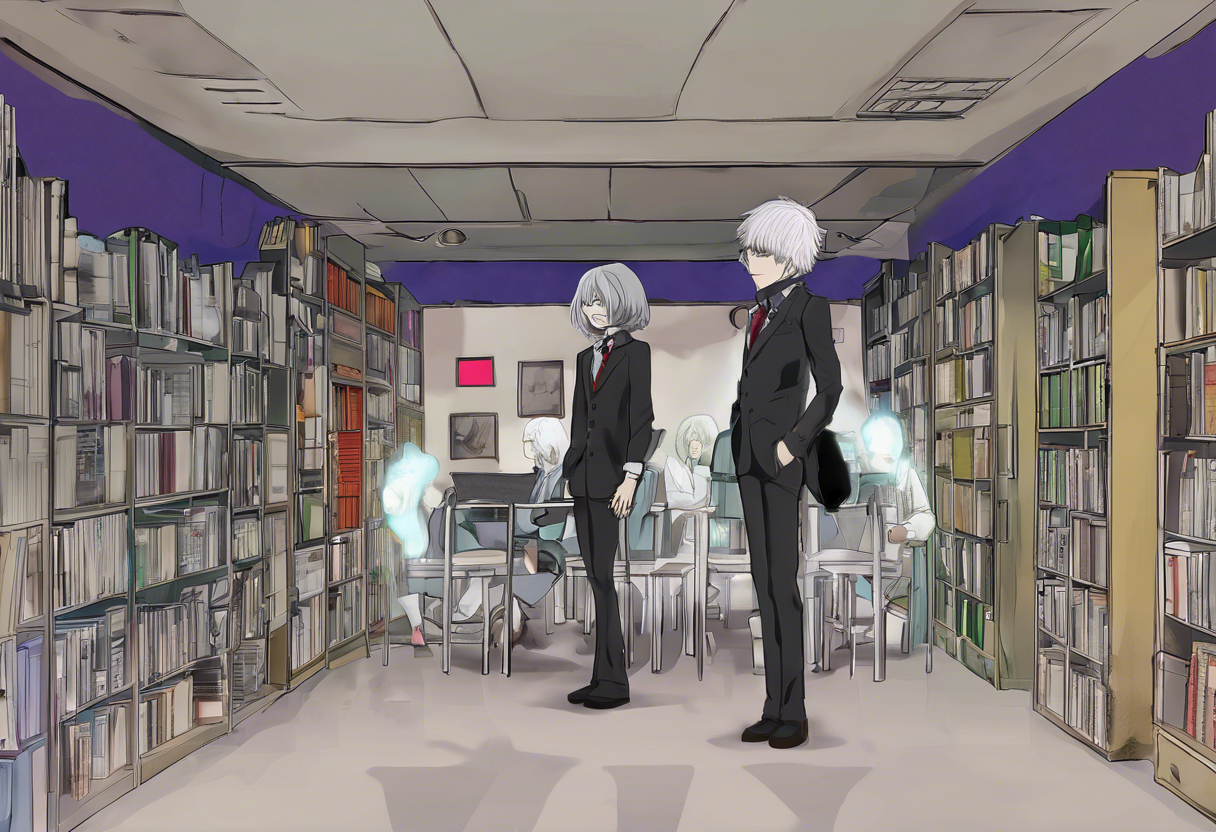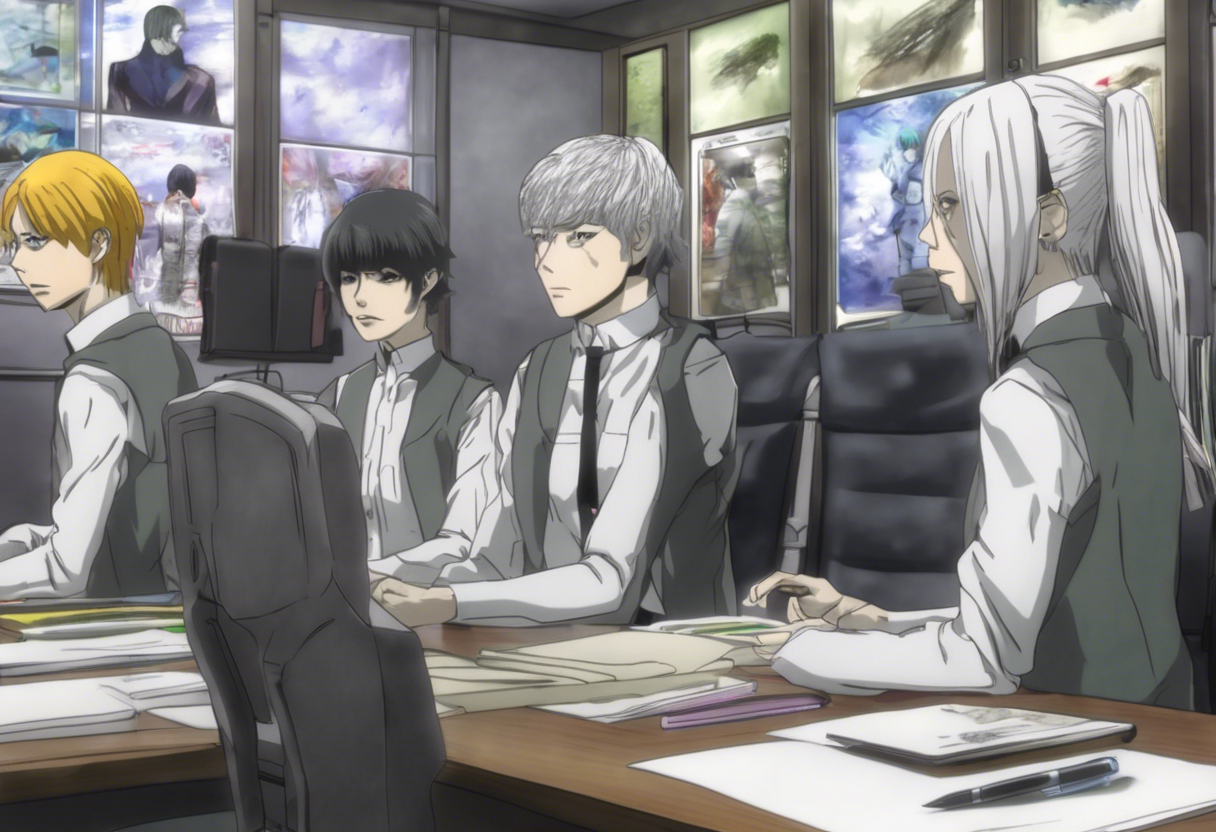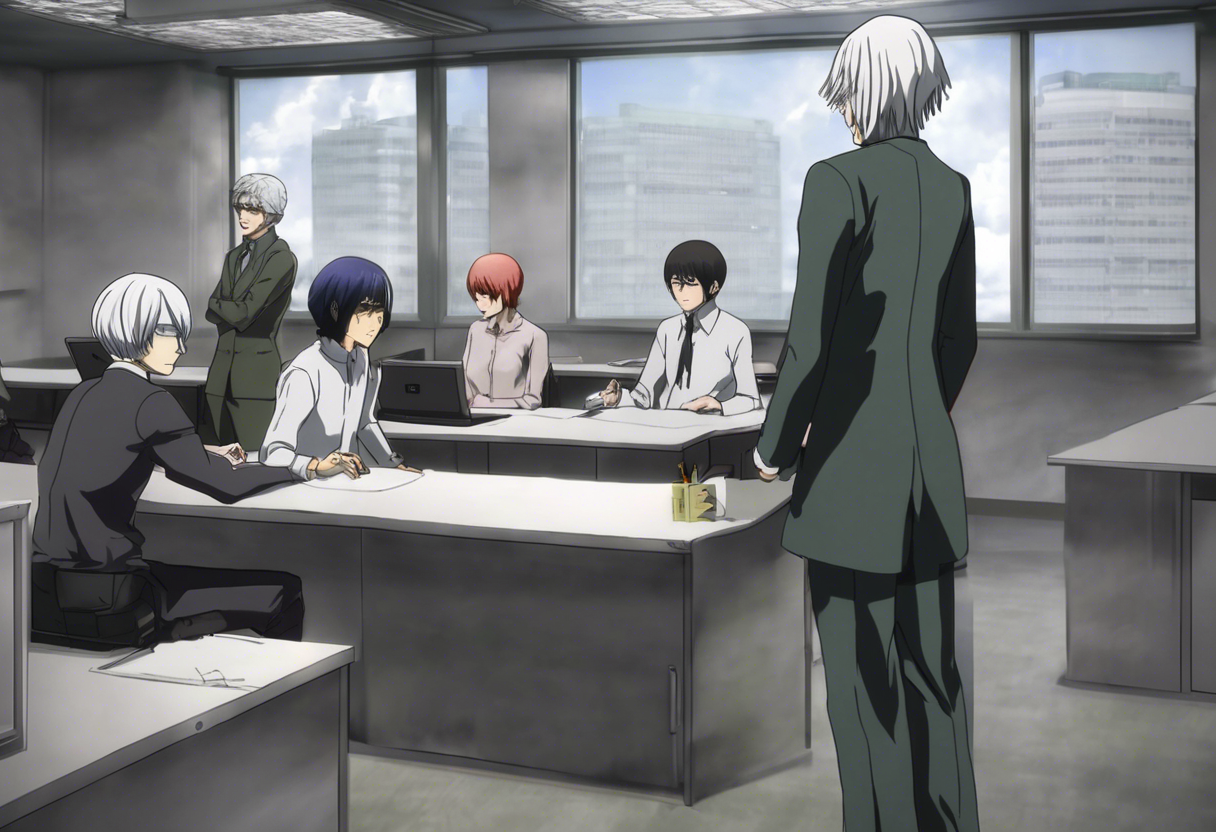Contents
Introduction
Tokyo Ghoul:re – Episode 35: "writE: The Absent One" is a pivotal episode in the second season of the anime series Tokyo Ghoul:re, which is an adaptation of Sui Ishida’s manga of the same name. The episode aired on June 12, 2018, and is part of a larger narrative that explores the complex and often brutal world of ghouls and the Commission of Counter Ghoul (CCG) agents who hunt them.
Produced by Pierrot, the episode was directed by Toshinori Watanabe, with screenplay by Chūji Mikasano, and produced by a team that included Ken Hagino and Shinya Shinozaki among others. This episode stands out within its genre for its intense action sequences, deep character development, and the emotional depth it brings to the storyline.
Plot Summary
In "writE: The Absent One," the narrative unfolds with a intense and chaotic backdrop as Kijima, Nimura Furuta, Sasaki, and the Quinx Squad launch a coordinated attack on the Tsukiyama family hideout. This hideout, a stronghold of the Tsukiyama family, is now a battleground where the lines between loyalty, survival, and sacrifice are starkly drawn.
As the battle rages on, Tsukiyama, also known as Shu Tsukiyama, is seen saying goodbye to his friends. His friends, aware of the impending danger, instruct him to proceed to the rooftop where a helicopter awaits to extract him to safety. This moment is poignant, as it highlights the desperation and the lengths to which characters will go to protect one another in a world where ghouls are hunted relentlessly.
Meanwhile, the Quinx Squad, comprising of Sasaki (who is actually Ken Kaneki in disguise), Shirazu, Saiko, and Urie, face off against a formidable foe named Noro. Noro, a ghoul with an eyeless mask, possesses a kagune that manifests as giant tendrils tipped with a massive maw, making him nearly invulnerable to conventional attacks. The squad’s encounter with Noro is a testament to their evolved combat skills, particularly highlighted by Shirazu’s use of his new quinque, Nutcracker. This weapon, capable of popping open its blade into an angled sphere, proves effective but not decisive, as Noro’s regenerative abilities make him a relentless adversary.
The rooftop becomes a critical setting as Sasaki, following orders from Kori Ui, makes his way to confront Tsukiyama. This confrontation is layered with tension and emotional complexity, given Sasaki’s dual identity as both a CCG investigator and the ghoul Ken Kaneki. Tsukiyama, aware of Sasaki’s true nature, is faced with a difficult decision: to surrender or to fight. The interaction between these two characters is a highlight of the episode, as it delves into themes of identity, loyalty, and the moral ambiguities of their world.
The episode also explores the sacrifices made by Tsukiyama’s family. His father, in a desperate bid to save his son, drugs Tsukiyama to keep him safe and acts as a meat shield along with the family’s servants until the helicopter can arrive. This act of selflessness underscores the depth of familial bonds and the extreme measures taken to protect loved ones in a world fraught with danger.
As the CCG breaks into teams to ascend the skyscraper, the episode showcases the strategic and tactical aspects of their operations. Sasaki’s confidence in the Quinx Squad’s abilities is evident, yet this confidence is tested by the sheer ferocity of the ghouls they encounter. The battle scenes are intense and graphic, reflecting the brutal nature of the conflict between ghouls and CCG agents.
The narrative arc of this episode is also marked by significant character developments. Sasaki’s internal conflict, as he grapples with his dual identity, is a recurring theme. His interactions with Tsukiyama and the other characters reveal the psychological toll of his situation, making him a more nuanced and relatable character.
The setting of the Tsukiyama hideout and the surrounding cityscape adds to the episode’s tension. The hideout, once a symbol of luxury and power, is now a battleground, highlighting the transient nature of power and the constant threat of violence in the world of Tokyo Ghoul.
Themes and Symbolism
"writE: The Absent One" delves into several central themes that are pivotal to the Tokyo Ghoul series. One of the most prominent themes is the struggle with identity. Sasaki’s dual role as a CCG investigator and a ghoul encapsulates this theme, as he navigates the moral complexities of his existence. This internal conflict is symbolic of the broader societal issues where individuals are forced to hide their true selves to survive.
The episode also explores the theme of sacrifice and loyalty. Tsukiyama’s family and their servants risking their lives to protect him illustrate the depth of familial bonds and the lengths to which individuals will go to protect their loved ones. This theme is further underscored by the actions of the Quinx Squad, who put their lives on the line to complete their mission.
The character of Noro serves as a symbolic representation of the unstoppable and relentless nature of the ghouls. His regenerative abilities and formidable kagune make him a nearly invulnerable foe, symbolizing the ongoing threat that ghouls pose to human society.
Cultural Impact
The release of "writE: The Absent One" was met with significant attention from fans and critics alike. The episode’s intense action sequences, coupled with its deep character development, resonated well with the audience. It contributed to the overall cultural impact of the Tokyo Ghoul series, which has been notable for its influence on anime and manga fandom.
The episode’s themes and characters have been referenced and adapted in various forms of media, including fan art, cosplay, and fan fiction. The series’ exploration of complex moral issues and its portrayal of a dystopian world have made it a staple in contemporary anime culture.
Critical Reception
Upon its release, "writE: The Absent One" received positive reviews from critics and audiences. The episode was praised for its intense action sequences, emotional depth, and the significant advancements in the plot. Critics noted the episode’s ability to balance action and character development, making it a standout in the series.
However, some critics pointed out the episode’s graphic violence and the emotional toll it takes on the characters, which could be overwhelming for some viewers. Despite these criticisms, the episode remains highly regarded for its contribution to the overall narrative of Tokyo Ghoul:re.
Legacy
"writE: The Absent One" continues to be an influential episode within the Tokyo Ghoul series. Its impact on the narrative and character development has been lasting, and it remains a pivotal moment in the storyline. The episode’s themes of identity, sacrifice, and loyalty continue to resonate with audiences, making it a memorable and impactful part of the series.
The episode’s influence can be seen in other anime and manga series that explore similar themes of identity and societal conflict. It has also inspired filmmakers and artists, contributing to its enduring relevance in the world of anime and manga.

